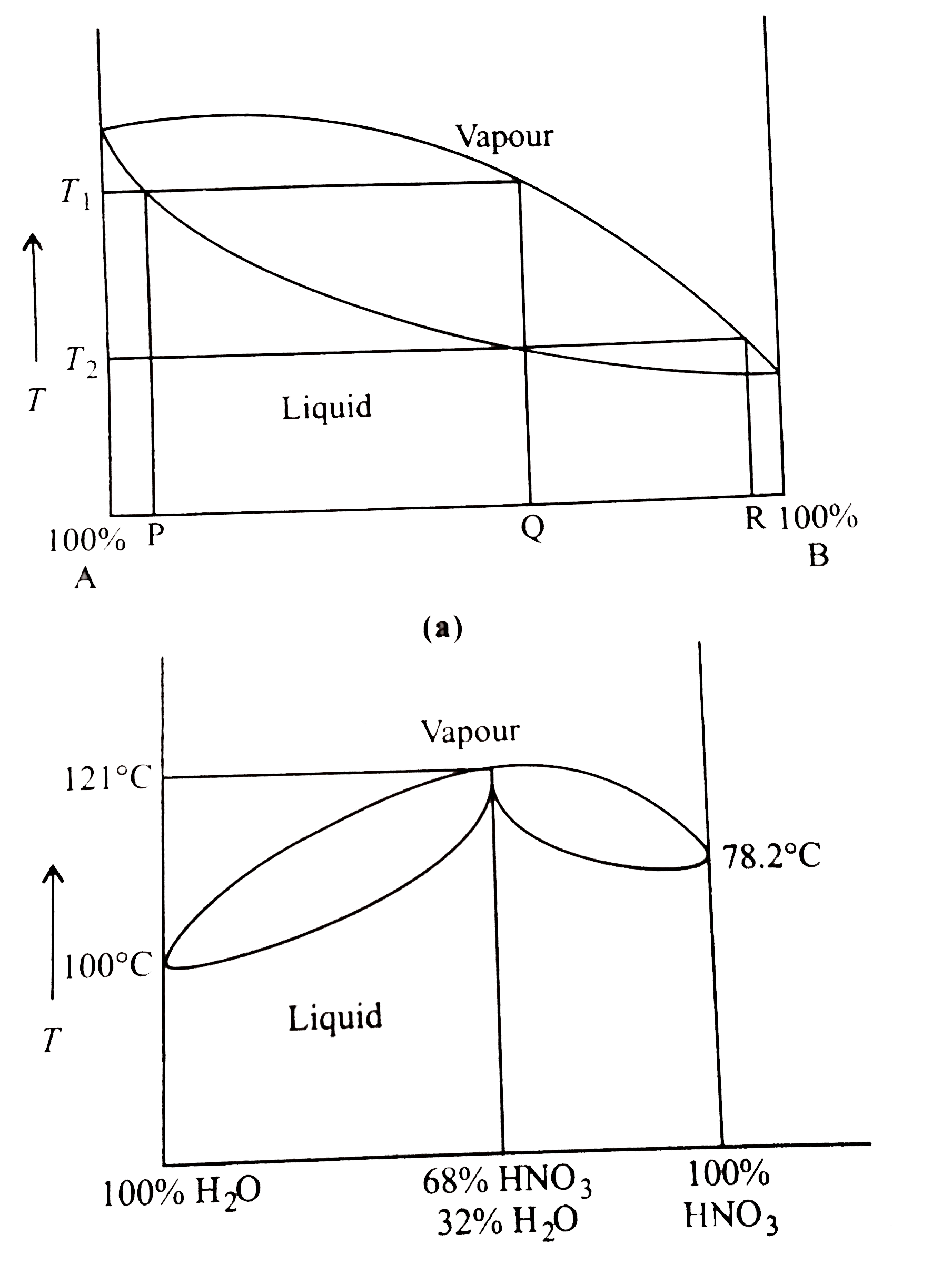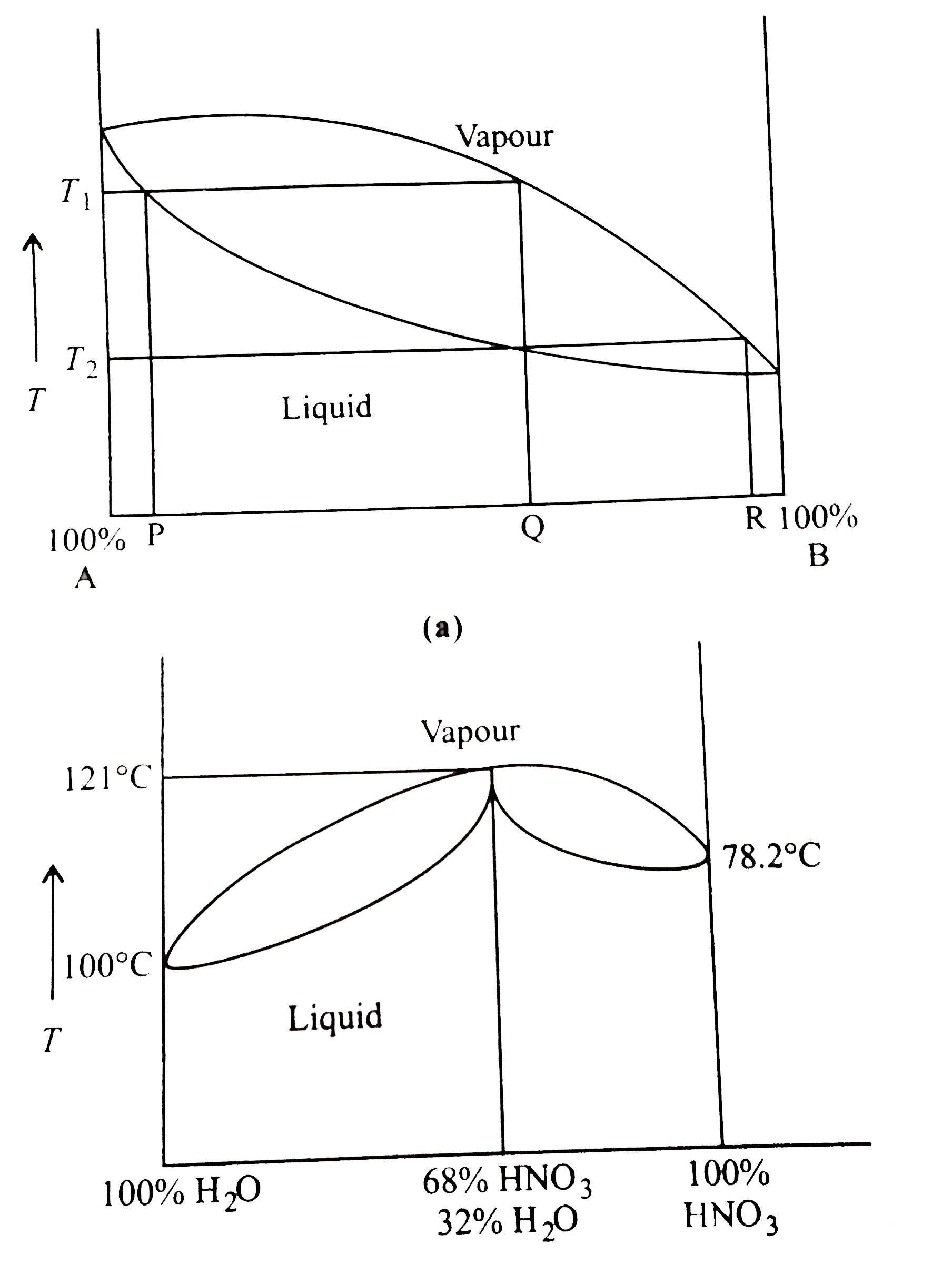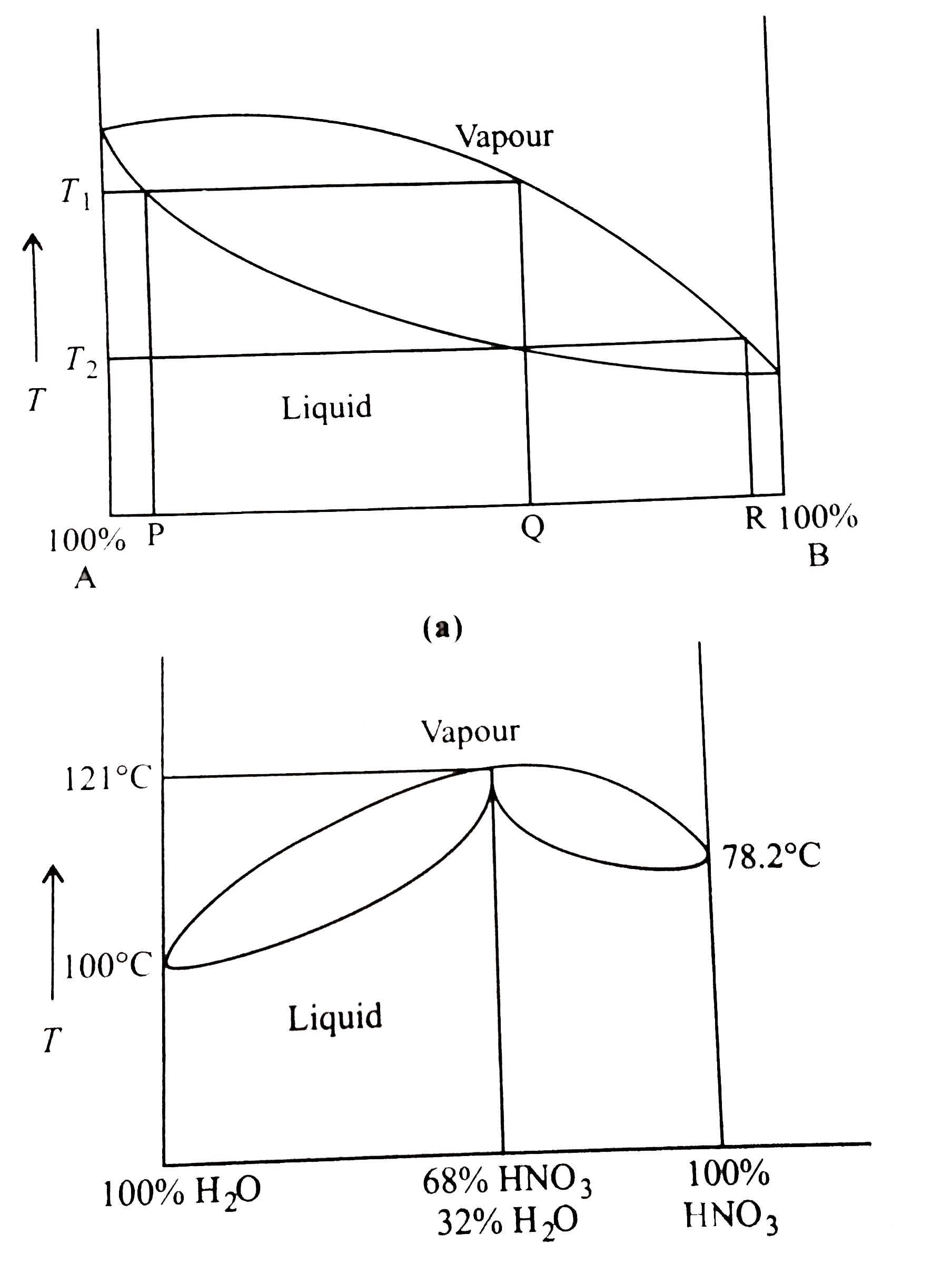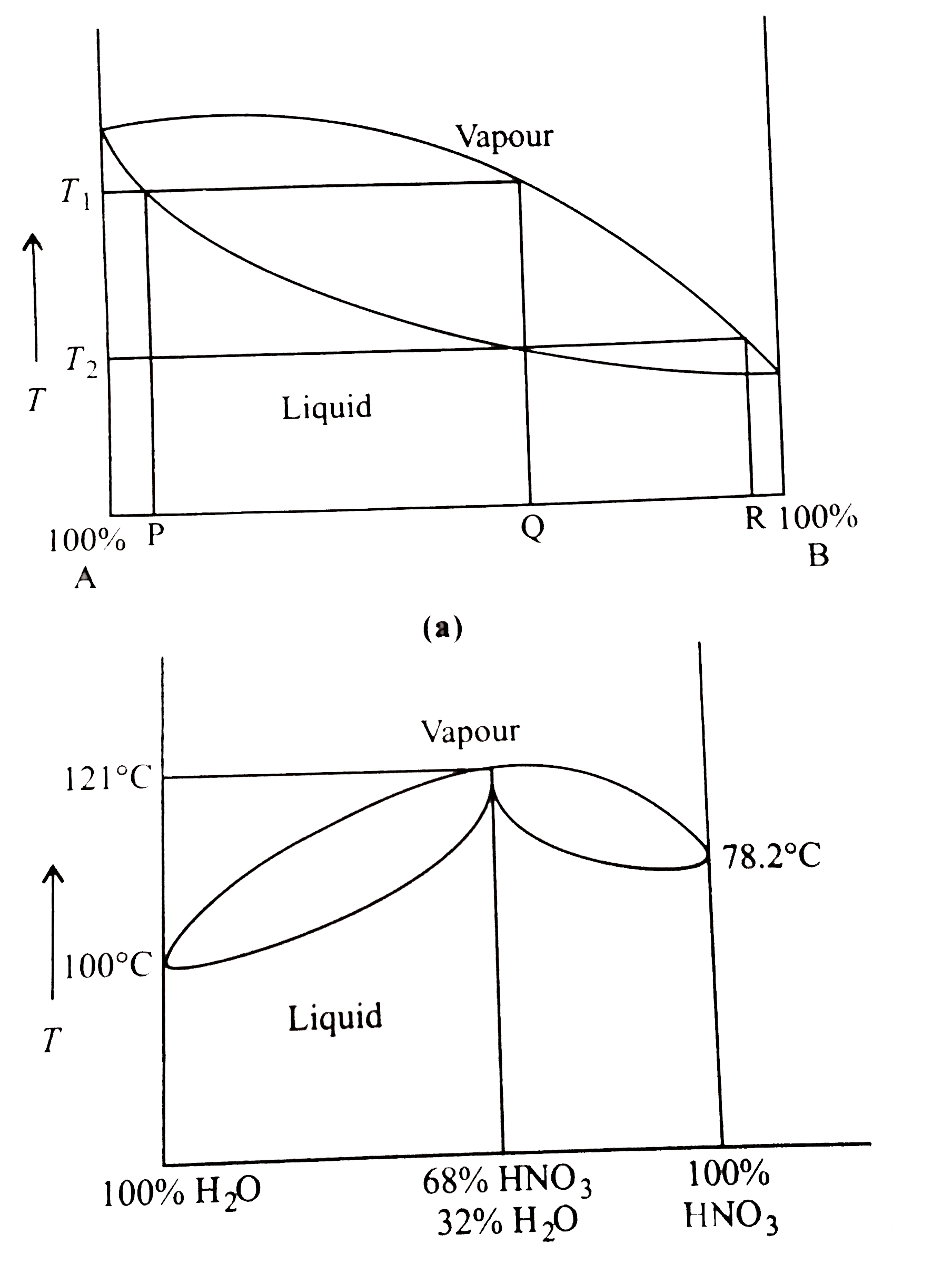A red liquid (A) when treated with sodium carbonate gives a mixture of two salts (B) and (C) in the solution In which (C) contains oxygen. The mixture then on acidification with sulphuric acid and distillation produces the red liquid (A) again.
Select the correct statement (or the liquid (A).
It acts as an oxidising agent
It is sparingly soluble in water
It converts the yellow-dye stuff fluorescein (l) into red colour compound
All of these
The correct Answer is:D
To solve the problem step by step, we can analyze the information provided and deduce the correct answer.
Step 1: Identify the Red Liquid (A)
The problem states that there is a red liquid (A) that reacts with sodium carbonate. Given the context, the red liquid is likely bromine water (Br2 in water), which is known for its reddish-brown color.
Hint: Think about common red liquids in chemistry that can undergo reactions with sodium carbonate.
Step 2: Reaction with Sodium Carbonate
When bromine water (A) reacts with sodium carbonate (Na2CO3), it produces two salts: one that contains oxygen (C) and one that does not (B). The likely products are sodium bromide (NaBr) and sodium bromate (NaBrO3).
Hint: Consider the types of salts that can form from the reaction of a halogen with a carbonate.
Step 3: Identify the Salts
From the reaction:
- Salt B: Sodium bromide (NaBr) - does not contain oxygen.
- Salt C: Sodium bromate (NaBrO3) - contains oxygen.
Hint: Recall the oxidation states and the composition of the salts formed from halogens.
Step 4: Acidification and Distillation
The mixture of salts (NaBr and NaBrO3) is then acidified with sulfuric acid (H2SO4). The reaction produces bromine gas (Br2) and sodium sulfate (Na2SO4). The distillation process allows the bromine gas to be collected, which is the red liquid (A) again.
Hint: Think about how acid-base reactions can regenerate the original reactants, especially in the context of halogens.
Step 5: Conclusion
The red liquid (A) is confirmed to be bromine water (Br2 in water). The question asks to select the correct statement regarding liquid A. The statements provided in the video indicate that:
1. It acts as an oxidizing agent.
2. It is sparingly soluble in water.
3. It converts yellow dyestuff fluorescein into a red compound.
All these statements are true regarding bromine water.
Hint: Evaluate each statement based on the properties of bromine water and its reactions.
Final Answer
The correct answer is that all the statements about the red liquid (A) are true.
The problem states that there is a red liquid (A) that reacts with sodium carbonate. Given the context, the red liquid is likely bromine water (Br2 in water), which is known for its reddish-brown color.
When bromine water (A) reacts with sodium carbonate (Na2CO3), it produces two salts: one that contains oxygen (C) and one that does not (B). The likely products are sodium bromide (NaBr) and sodium bromate (NaBrO3).
From the reaction:
- Salt B: Sodium bromide (NaBr) - does not contain oxygen.
- Salt C: Sodium bromate (NaBrO3) - contains oxygen.
The mixture of salts (NaBr and NaBrO3) is then acidified with sulfuric acid (H2SO4). The reaction produces bromine gas (Br2) and sodium sulfate (Na2SO4). The distillation process allows the bromine gas to be collected, which is the red liquid (A) again.
The red liquid (A) is confirmed to be bromine water (Br2 in water). The question asks to select the correct statement regarding liquid A. The statements provided in the video indicate that:
1. It acts as an oxidizing agent.
2. It is sparingly soluble in water.
3. It converts yellow dyestuff fluorescein into a red compound.
The correct answer is that all the statements about the red liquid (A) are true.
Topper's Solved these Questions
- P BLOCK ELEMENTSBOOK - RESONANCE ENGLISHCHAPTER - P BLOCK ELEMENTSEXERCISE - Exercise 3 part-1
8 Videos
- P BLOCK ELEMENTSBOOK - RESONANCE ENGLISHCHAPTER - P BLOCK ELEMENTSEXERCISE - Exercise 3 part-2
11 Videos
- P BLOCK ELEMENTSBOOK - RESONANCE ENGLISHCHAPTER - P BLOCK ELEMENTSEXERCISE - Exercise 2 part-2
41 Videos
- NUCLEAR CHEMISTRYBOOK - RESONANCE ENGLISHCHAPTER - NUCLEAR CHEMISTRYEXERCISE - STAGE-II
1 Videos
- P-BLOCK ELEMENT (BORON AND CARBON FAMILY)BOOK - RESONANCE ENGLISHCHAPTER - P-BLOCK ELEMENT (BORON AND CARBON FAMILY)EXERCISE - PART - III : OLYMPIAD PROBLEMS (PREVIOUS YEARS) STAGE - V (INTERNATIONAL CHEMISTRY OLYMPIAD (IChO)) Problem 3
8 Videos
Similar Questions
A red liquid (A) when treated with sodium carbonate gives a mixture of two sails (B) and (C) in the solution In which (C) contains oxygen. The mixture then on acidification with sulphuric acid and distillation produces the red liquid (A) again.
Which of the following statement is false for salt (B)?
View SolutionA liquid 'A' is treated with Na2CO3 solution. A mixture of two salts 'B' and 'C' is produced in the solution. The mixture on acidification with sulphuric acid and distillation produces the liqiud 'A" again. Identify 'A','B' and 'C' and write the equations involved.
View Solution(i) A powdered substance (A) on treatment with fusion mixture gives a green coloured compound (B). (ii) The solution of (B) in boiling water on acidification with dilute H2SO4 gives a pink coloured compound (C).
(iii) The aqueous solution of (A) on treatment with NaOH and Br2− water gives a compound (D).
(iv) A solution of (D) in conc. HNO3 on treatment with lead peroxide at boiling temperature produced a compound (E) which was of the same colour at that of (C) . Identify A,B,C,D,E
View Solutionrepresents the distillation of mixture of liquid A and liquid B which gives both of pure liquid A and B . Represents the azeotropic mixture of HNO3 and H2O which distillation gives an azeotropic mixture and either of pure liquid. We cannot separate both the pure liquid, i.e., H2O and HNO3.
Which of the following statements is/are correct?
i. HNO3 solution is not obeying the Raoult's law.
ii. More the difference in vapour pressure of pure compounds forming a mixture, easier to separate them through distillation.
iii. T2 is less than T1 because the liquid of composition Q is richer in more volatile component.

View SolutionSolution A is a sodium hydroxide solution Solution B is a weak acid. Solution C is dilute sulphuric acid. Which solution will
contain solute molecules and ions ?
View Solutionrepresents the distillation of mixture of liquid A and liquid B which gives both of pure liquid A and B . Represents the azeotropic mixture of HNO3 and H2O which distillation gives an azeotropic mixture and either of pure liquid. We cannot separate both the pure liquid, i.e., H2O and HNO3.
What is the result of distilling a mixture of 80%HNO3 and 20%H2O?
(a)Pure H2O and azeotropic mixture can be separated.
(b)Pure H2O and pure HNO3 can be separated.
(c)Pure HNO3 and azeotropic mixture can be separated.
(d)None of these
View Solutionrepresents the distillation of mixture of liquid A and liquid B which gives both of pure liquid A and B . Represents the azeotropic mixture of HNO3 and H2O which distillation gives an azeotropic mixture and either of pure liquid. We cannot separate both the pure liquid, i.e., H2O and HNO3.

What is the result of distilling a mixture of 50%HNO3 and 50%H(2)O ?
a.Pure water and azeotropic mixtue can be separated.
b.Pure H2O and pure HNO3 can be separated.
c.Pure HNO3 and azeotropic mixture can be separated.
d.None of these
View SolutionA mixture of two salt was treated as follows :
i. The mixture was heated with magnanese dioxide and concentrated sulphuric acid , when a yellowish -green gas was liberated.
ii. The mixture on heating with sodium hydroxide solution gave a gas which turned red litmus blue
iii. Its solution in water gave a blue precipitate with potassium ferricyanide and red colourtion with ammonium thiocynate
iv. The mixture was boiled with potassium hydroxide and the librated gas was bubbled through an alkline solution of K2HgI4 to give a brown precipitate identify the two salts gives ionic equation for the reaction involved in the tests (i) , (ii) and (iii).
View Solutionrepresents the distillation of mixture of liquid A and liquid B which gives both of pure liquid A and B . Represents the azeotropic mixture of HNO3 and H2O which distillation gives an azeotropic mixture and either of pure liquid. We cannot separate both the pure liquid, i.e., H2O and HNO3.
At temperature T1 and composition Q, which of the following is true?

a.Vapour phase is richer in B while liquid phase is richer in A .
b.Distillation of composition Q gives only pure A .
c.Distillation of composition Q gives only pure A and pure B .
d.Distillation of composition Q gives higher percentage of B and A .
View Solution(a) Under which category of mixtures will you classify alloys and why?
(b) A solution is always a liquid. Comment.
(c) Can a solution be heterogeneous?
View Solution
